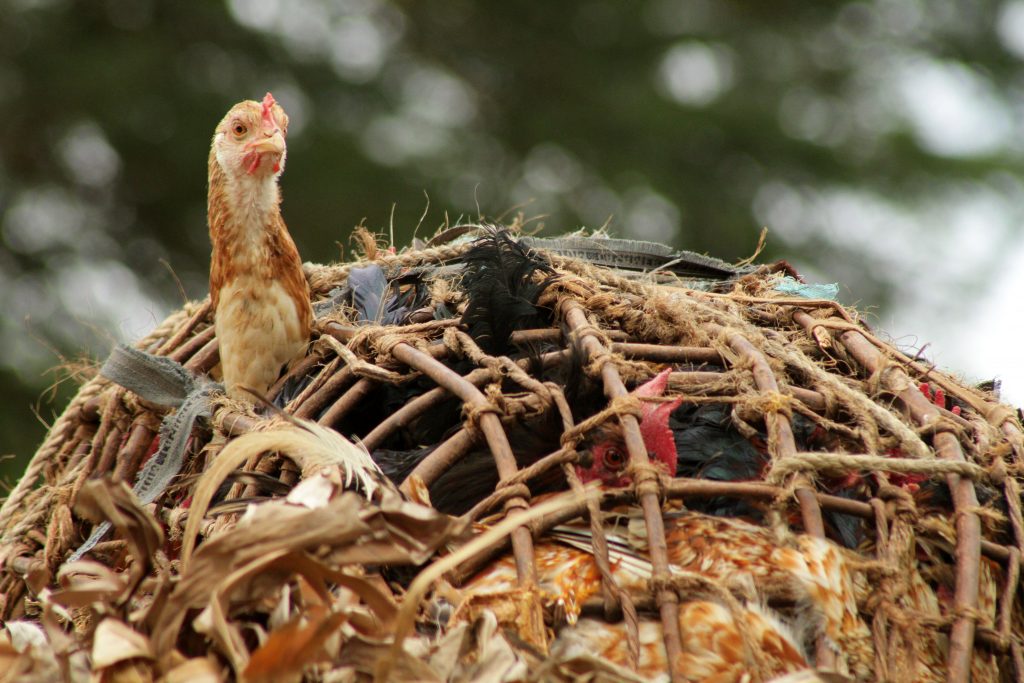Transport
Every week, millions of animals are transported to slaughterhouses to meet gruesome ends. After a life of confinement and abuse, the journey to slaughter is equally harrowing—they’re crammed into trucks or made to walk for days without rest, food, or water. They’re routinely beaten up and many of them die on the way. To keep the exhausted animals from sinking to the ground, the drivers twist their tails and rub chillies and tobacco into their eyes.
Chickens don’t fare better when it comes to transport and slaughter. Workers grab the birds roughly and cram them onto trucks where they’re exposed to blazing heat, wind, and rain for hours. After unloading them, they’re tied by their feet and hung upside down on hooks. Many of them break their wings and legs due to the rough handling.

Slaughterhouses
It’s hard to comprehend how horrible slaughterhouses are—both for animals and humans—without visiting one.
It’s illegal to kill animals in full view of other animals, but this is a common practice in all slaughterhouses and meat shops. The slaughterhouse workers hack at their throats with dull blades, cut off their limbs, and even skin them while they’re still conscious.
Investigators found that the terrified animals were given electric shocks with live wires to force them towards the slaughter hall. In some slaughterhouses, the animals have their heads beaten to a pulp with a dozen hammer blows instead of the standard knife to the throat.
Slaughterhouse workers
This brutal system also treats slaughterhouse workers more as objects to be discarded than as human beings.
Slaughterhouses in India employ several thousand workers who are forced to work in unhygienic conditions and are denied basic rights such as sick leave and weekly time off. The workers are often made to work over 12 hours a day, seven days a week. Most of them don’t receive protective gears and can be seen working with their bare hands and in sandals or barefoot. Many illegal meat shops also employ children under the age of 14.
Slaughterhouse workers perform a job—killing innocent animals—that few meat-eaters are willing to do. A steady flow of investigations shows that terrible working conditions take a toll on the workers who will sometimes act out cruelly toward the animals. It’s a vicious cycle of abuse.
1. Animals electrocuted at Ghaziapur slaughterhouse, an investigation by PETA India
2. How India’s sacred cows are beaten, abused, and poisoned to make leather for high street shops, by Peter Popham for Independent
3. India: Barefoot slaughterhouse workers fight for rights in the world’s third largest beef exporter, by IUF